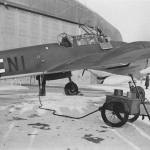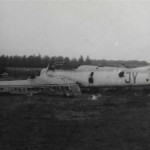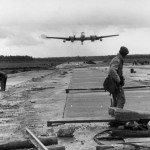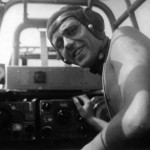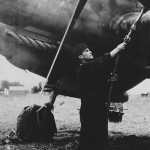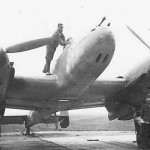Messerschmitt Bf 110 C 4 CE+CL Doberitz 21.09.1941 2
Messerschmitt Bf 110 3U+FR ZG26 Afrika
Messerschmitt Bf 110 winter camo code 3U+AD ZG 26
Messerschmitt Bf 110 C 2 CF+NI WNr.3068 Winter 1939 40 Magdeburg Ost 2
Messerschmitt Bf 110 E 3U+EN 5.ZG 26 Alexandria Romania 1941
All-black Messerschmitt Bf 110 +YB
Messerschmitt Bf 110 C 2 CF+NI WNr.3068 Winter 1939 40 Magdeburg Ost
Messerschmitt Bf 110 E 3U+AN 5.ZG 26 Alexandria Romania 1941
Bf 110 M8+PL 3182 ZG76
Messerschmitt Bf 110 C 4 CE+CL Doberitz 21.09.1941
Messerschmitt Bf 110 +FR
wreckage Messerschmitt Bf110 +JY
Messerschmitt Bf 110 Jagdgeschwader JG6 Africa
destroyed Messerschmitt Bf110
Messerschmitt Bf 110 ZG1 nose art
Messerschmitt Bf 110 on airfield
Messerschmitt Bf 110 G 4 with radar NJG
ZG76 Haifischgeschwader Bf110 1940
Messerschmitt Bf 110 E (7)F/LG 2 Poesti 1941
Messerschmitt Bf 110 D Dackelbauch with 900 l drop tanks Stavanger Norway
Messerschmitt Bf 110 ZG1
Messerschmitt Bf 110 during maintenance – frontal view
Messerschmitt Bf 110 ZG1 winter
Messerschmitt Me 110 fighter ZG76 Sharks Mouth nose art
Messerschmitt Bf 110 nose art pilot 3
Messerschmitt Bf 110 G-4 with radar
Messerschmitt Bf 110 nose art pilot 2
Messerschmitt Bf 110 in flight
Messerschmitt Bf 110 and Erich von Manstein
Messerschmitt Bf 110 Zerstorergeschwader ZG26 Kreta
Zerstorer Messerschmitt Bf 110 front view
Messerschmitt Bf 110 cockpit pilot
Bf 110 of 13(Z)/JG 5 Eismeer
Messerschmitt Bf 110 France
Messerschmitt Bf 110 ZG26
Messerschmitt Bf 110 ZG1 pilot
Messerschmitt Bf 110 nose art pilot
Messerschmitt Bf 110 G 2 with WGr 21 rockets 1944
Messerschmitt Bf 110 of ZG76 “Haifischgeschwader”
Soldier with Messerschmitt Bf110 ZG26 Africa
Messerschmitt Bf 110 B
Messerschmitt Bf 110 ZG76
Messerschmitt Bf 110 Zerstorergeschwader ZG26 Afrikakorps
Bf 110 code M8+CM 4/ZG 76
Messerschmitt Bf 110 and pilot
Messerschmitt Bf 110 G-4 Night Fighter
Nachtjager Me110 of the NJG 4 in FLORENNES Belgium
Messerschmitt Bf 110 fighters in action
Messerschmitt Bf 110 nose art
Messerschmitt Bf 110 of the III/ZG 76 – nose art
Messerschmitt Bf 110 nachtjager
Messerschmitt Bf 110 ZG1 in flight
Messerschmitt Bf 110 wreckage
Messerschmitt Bf 110 trainer on airfield
Bf110 world war II aircraft
A devastated Messerschmitt Bf110 found at an airfield soon after the war’s end
Messerschmitt Bf 110 white nose
Messerschmitt Bf 110 E 5 ZG 26 Summer 1941
Messerschmitt Bf 110 Jagdgeschwader JG6 Kreta
Luftwaffe mechanics servicing Messerschmitt Bf 110 of the 7(F)/LG 2 Kalamaki 1941
Luftwaffe mechanics servicing Messerschmitt Bf110 Africa (DAK)
The cockpit interior of a Messerschmitt Bf 110
Messerschmitt Bf 110 destroyed
Night fighter Bf110 G-4 with radar
Messerschmitt Bf 110 pilot
Captured Messerschmitt Bf 110G Night Fighter near Munich May 1945
Messerschmitt Bf 110 E of 7(F)/LG 2 Summer 1941
Messerschmitt Bf 110 from ZG26 with typical winter camouflage scheme
Messerschmitt Bf 110 Zerstorer german fighter
ZG76 Bf110 with sharks mouth nose art 1940
Messerschmitt Bf 110 C D 5/ZG 26 summer in Valenciennes 1940
Messerschmitt Bf 110 WW2 fighter
Messerschmitt Bf 110 Erprobungsgruppe 210
Messerschmitt Bf 110 Zerstorer
Messerschmitt Bf110 G fighter
Messerschmitt Bf 110 E 2N
Messerschmitt Bf 110 heavy fighters
Messerschmitt Bf 110 G Zerstorer
Messerschmitt Bf 110 nose art 7/LG2
Messerschmitt Bf 110 Wunstorf 1941
Messerschmitt Bf 110E of 5/ZG 26 Summer 1941
Messerschmitt Bf 110 fighters
Messerschmitt Bf 110 B fighter
Messerschmitt Bf 110 over sea
Messerschmitt Bf 110 fighters ZG1
Messerschmitt Bf 110 of LG1 in flight, July 1940
Messerschmitt Bf 110 Zerstörer (Destroyer) was a twin-engine heavy fighter / night fighter developed in Germany in the 1930s and used by the Luftwaffe and others during World War II.
Total production: 6050 units.
Design and Structure (Bf 110G)
- Wings:
- Low-wing cantilever monoplane with two tapered sections and small squared tips.
- Aspect ratio of 7.3:1, with a root thickness-to-chord ratio of 0.185.
- All-metal construction featuring a single spar, former ribs at 10-inch intervals, and lateral stringers spaced 12 inches apart, all covered with stressed-metal skin.
- Hydraulically-operated slotted flaps (20% of the chord) and slotted ailerons with external mass-balance weights. The ailerons droop when flaps are lowered.
- Handley Page automatic slots on the leading edge opposite the ailerons.
- Fuselage:
- Oval all-metal stressed-skin structure, similar in construction to the Me 109.
- Made in two portions, with armament mounted in the nose and various internal configurations.
- Tail Unit:
- Cantilever monoplane with twin fins and rudders located at the extremities.
- Metal framework with metal-covered fixed surfaces and fabric-covered control surfaces, including trimming tabs in elevators and rudders.
Landing Gear
- Type: Retractable, with wheels that retract backwards into the engine nacelles’ tails. The tail-wheel is fixed, and the main wheels have hydraulic retraction with hinged doors.
Power Plant
- Engines: Two Daimler-Benz DB 605 B twelve-cylinder inverted Vee liquid-cooled engines.
- Each engine is rated at 1,350 h.p. at 5,700 m (18,700 ft), with 1,500 h.p. available for take-off.
- Equipped with VDM three-bladed controllable-pitch full-feathering airscrews.
- Cooling system includes 50/50 glycol/water radiators and oil coolers positioned strategically for efficient airflow and temperature control.
- Normal fuel capacity is 1,270 liters (280 Imp. gallons), with provisions for additional jettisonable tanks.
Accommodation
- Cockpit: Enclosed cockpit with pilot’s position forward of the wing’s leading edge and rear gunner’s position over the trailing edge, all covered by a continuous transparent hood.
- Armor: Frontal, rear, and floor armor to protect the crew.
Armament
- Varies considerably based on mission requirements:
- A typical configuration for a night fighter includes:
- Two 30 mm MG 108 and two 20 mm MG 151/20 cannons in the nose, firing forward.
- Two 20 mm MG FF cannons fixed in the rear cockpit, firing obliquely upward.
- Twin 7.9 mm MG 81 machine guns on a flexible mounting, firing aft.
- Additional options include four 21 cm rocket tubes under the wings and two bomb-carriers under the fuselage, capable of carrying bombs, such as two 500 kg bombs.
- A typical configuration for a night fighter includes:
Dimensions and Weights
- Dimensions:
- Span: 53 ft. 4 in. (16.2 m)
- Length: 40 ft. 4 in. (12.3 m)
- Height: 13 ft. 1½ in. (3.9 m)
- Wing Area: 413 sq. ft. (37.17 sq. m)
- Weights:
- Varies by configuration. A typical loaded weight for a variant equipped with tropical equipment and bombs could reach 22,100 lbs. (10,045 kg), with an empty weight around 11,220 lbs. (5,100 kg).
Performance
- Maximum Speed: 340 mph (544 km/h) at 21,000 ft. (6,405 m)
- Climb Rate: To 18,000 ft. (5,490 m) in 8 minutes
- Range: With maximum fuel, approximately 1,300 miles (2,080 km)
This aircraft was a versatile platform used in various roles throughout its service, known for its adaptability to different combat and support missions.
Bibliography:
- Martin W. Bowman – German Night Fighters Versus Bomber Command 1943-1945. The Second World War by NightManfred Griehl – Nachtjäger über Deutschland 1940 – 1945. Bf 110 – Ju 88 – He219 (German)
- Gebhard Aders – History of the German Night Fighter Force 1917-1945
- Ron Mackay – Messerschmitt Bf 110, Crowood Press 2000
- Messerschmitt Bf110 Zerstorer & Nachtjager – Famous Airplanes Of The World 41, Bunrin Do 1993 (japanese)
- Shigeru Nohara, Masato Tanaka – Messerschmitt Bf110, Aero Detail №21, (japanese)
- Christopher F. Shores: Luftwaffe Fighter, Bomber & Marine Camouflage & Markings 1940 – Bf110 – Ju87 – Fw200 – He59 – He115 – Do215 – Do18 – Do24 – Ar196, Osprey Aircam Aviation Series S11
- David P. Williams – Night Fighters. Hunters of the Reich
- Rudiger Kosin – The German Fighter Since 1915
- Werner Held, Holger Nauroth – German Fighters in World War II. The Night Fighters. A Photographic History of the German Nachtjager 1940-1945
- Peter W. Cohausz – Deutsche Flugzeugcockpits und Instrumentenbretter Teil 8. Zweiter Weltkrieg Messerschmitt – Winter, Cockpit Profile 8
- Armand Van Ishoven – Messerschmitt Bf 110 at War, Ian Allan Ltd 1985
- John Vasco – Messerschmitt Bf 110 C, D and E: An Illustrated Study. Variants, Weapons, Equipment
- John Weal, Chris Davey – Arctic Bf 109 and Bf 110 Aces, Osprey Aircraft of the Aces 124
- Jerry L. Campbell, Don Greer – Messerschmitt Bf 110 Zerstorer in action – Squadron Signal Aircraft No. 30
- John Weal – Messerschmitt Bf 110 Zerstorer Aces of World War 2, Osprey Aircraft of the Aces 25
- Jerry Scutts and John Weal – German Night Fighter Aces of World War 2. Osprey Aircraft of the Aces 20Heinz Mankau, Peter Petrick – Messerschmitt Bf 110/Me 210/Me 410: An Illustrated History, Schiffer Military History Book
- Tony Holmes and Jim Laurier – Hurricane I vs Bf 110: 1940, Osprey Duel
- Robert Forczyk, Jim Laurier -Bf 110 vs Lancaster: 1942-45, Osprey Duel
- Ron Mackay – Walk Around Messerschmitt Bf 110G, Squadron/Signal Publications Walk Around No. 24)
- Brett Green – Modelling the Messerschmitt Bf 110
- Dominique Breffort, Andre Jouineau – Messerschmitt Me 110 From 1939 to 1945. Messerchmitt’s twin-engined Bf 110, Me 210 and 410
- John Vasco -Messerschmitt Bf 110: Bombsights Over England: Erprobungsgruppe 210 in the Battle of Britain, Schiffer Military History Book
- Manfred Griehl – German Night Fighters in World War II, Schiffer Military
- Dominique Breffort – German Fighters. Volume 2: Bf110 – Me210 – Me410 – Fw190 – Me262 – Me183 – He162
- George G. Hopp – Bf 110 G, Monogram Close-Up 18
- Holger Nauroth, Werner Held – Messerschmitt Bf110 Over All Fronts 1939-1945
- Fernando Estanislau, John Vasco – The Messerschmitt Bf 110 in Color Profile: 1939-1945, Schiffer Military History Book
- Marek J. Murawski – Messerschmitt Bf 110 Vol I, Kagero Monographs 16
- Maciej Noszczak – Messerschmitt Bf 110 G All Models, Kagero Top Drawings 10
- Michael Ziefle – Messerschmitt Bf 110. Die Rehabilitierung eines Flugzeuges (German)
- Arms Magazine – German Fighters in W.W.II, Arms Photo Collection Series 1: Messerchmitt Bf 109, Bf110, & Me210, Me410, Me262 and Jet Fighters. Focke-Wulf Fw190 & the other combat airplanes (japanese)
- Martin C Windrow – The Messerscmitt Bf110, Profile Publications 23
- Alfred Price – Messerschmitt Bf 110 Night Fighters, Aircraft Profile 207
- Werner Held, Holger Nauroth – Defence of the Reich: Hitler’s Nightfighter Planes and Pilots
- Werner Held – The Day Fighters : A Photographic History of the German Tagjager, 1934-1945. German Fighters in World War II
- John J. Vasco – Zerstorer Volume Two: Luftwaffe Fighter Bombers and Destroyers 1941-1945, Luftwaffe Colours
- John J. Vasco – Zerstorer Volume One – Luftwaffe Fighter Bombers and Destroyers 1936-1940, Luftwaffe Colours
- John J. Vasco, Peter D. Cornwell – Zerstorer: The Messerschmitt 110 and Its Units in 1940



